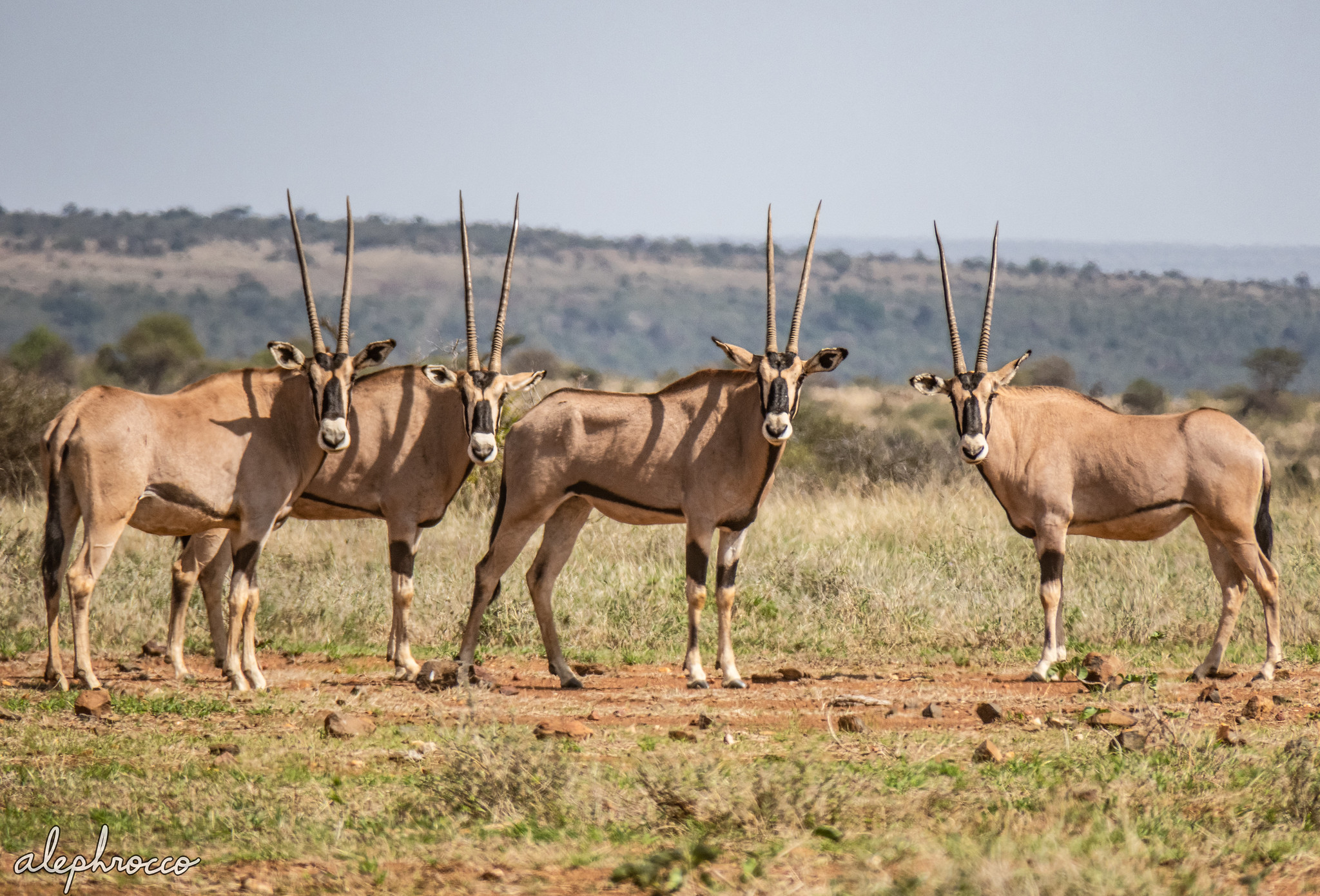
East African Oryx (Oryx beisa) are one of the antelope species we’ve encountered least often so far. We stumbled upon a group of about ten of them feeding together in a glade, and it was my first time being close enough to see their black markings across the face, underside of the body, front legs, and tips of the ears. The horns of an oryx are easily distinguishable from other antelope in that they are almost completely straight, growing to over twice the length of the head. It is thought that ‘tournament displays’ help establish hierarchies within herds. An oryx will run in circles around the herd, spacing out their strides into more of a trot, and tilt their heads and charge into the center with horns swinging. Actual fighting between individuals during these displays is uncommon, though males will sometimes perform mock jousts at one another, eventually coming into contact with one another if both parties refuse to back down. Beisa oryx inhabit savannas, grasslands, and more arid regions throughout Kenya, Ethiopia, Tanzania, and South Sudan. Due to their small distribution, habitat loss and agriculture have lead to especially sharp population declines. They are listed as Endangered by the IUCN Red list with 50–75% decreases in some areas, and in Laikipia estimates suggest there were approximately 700 oryx as of 2016.
Photographed after slight disturbance [2]
